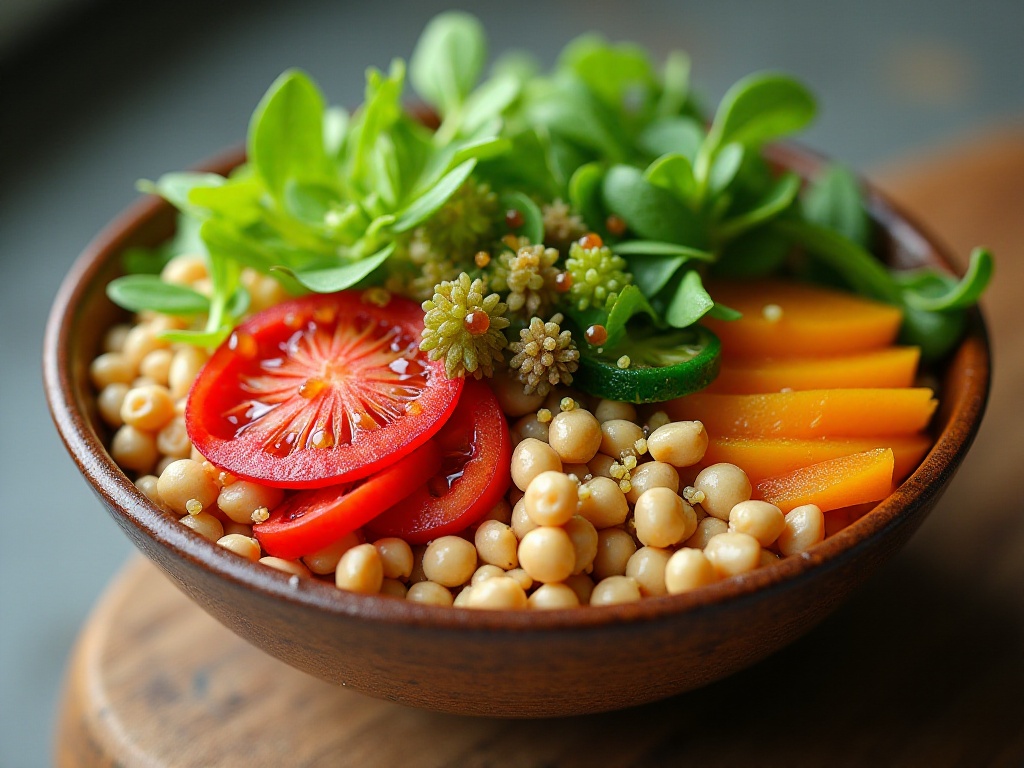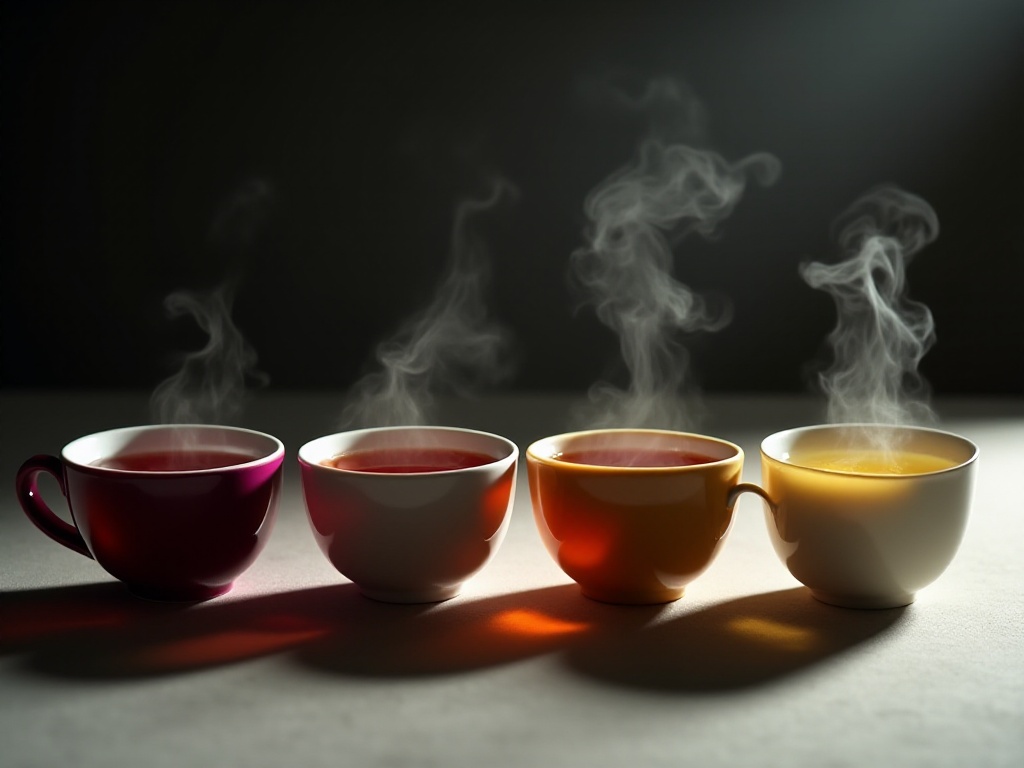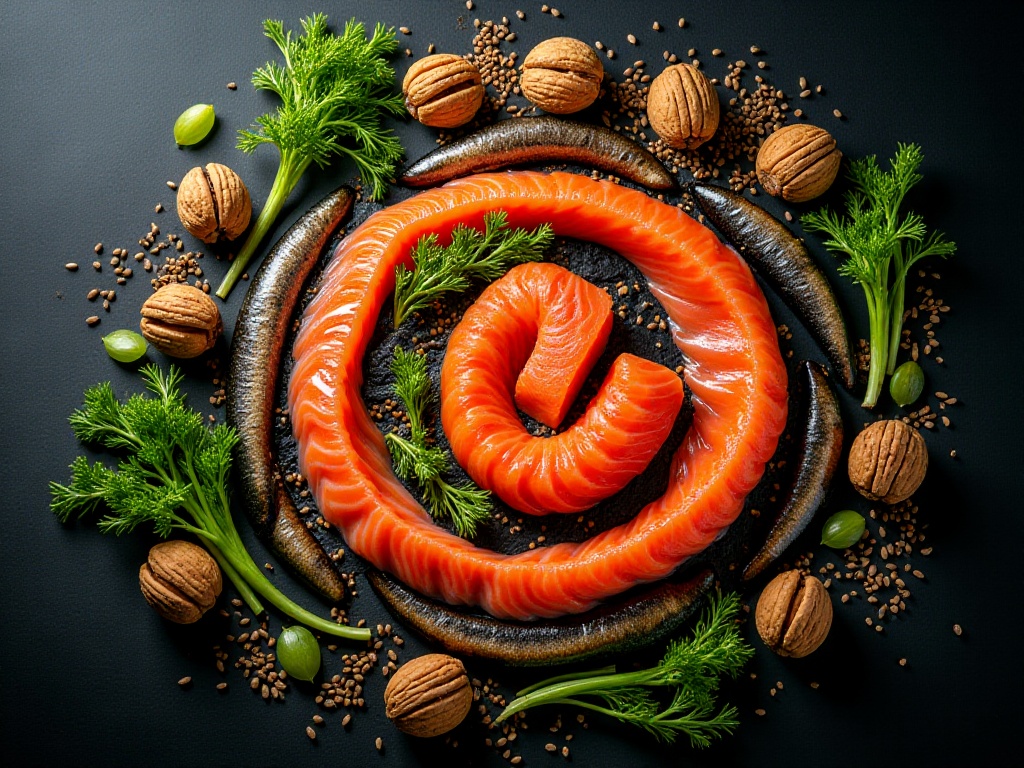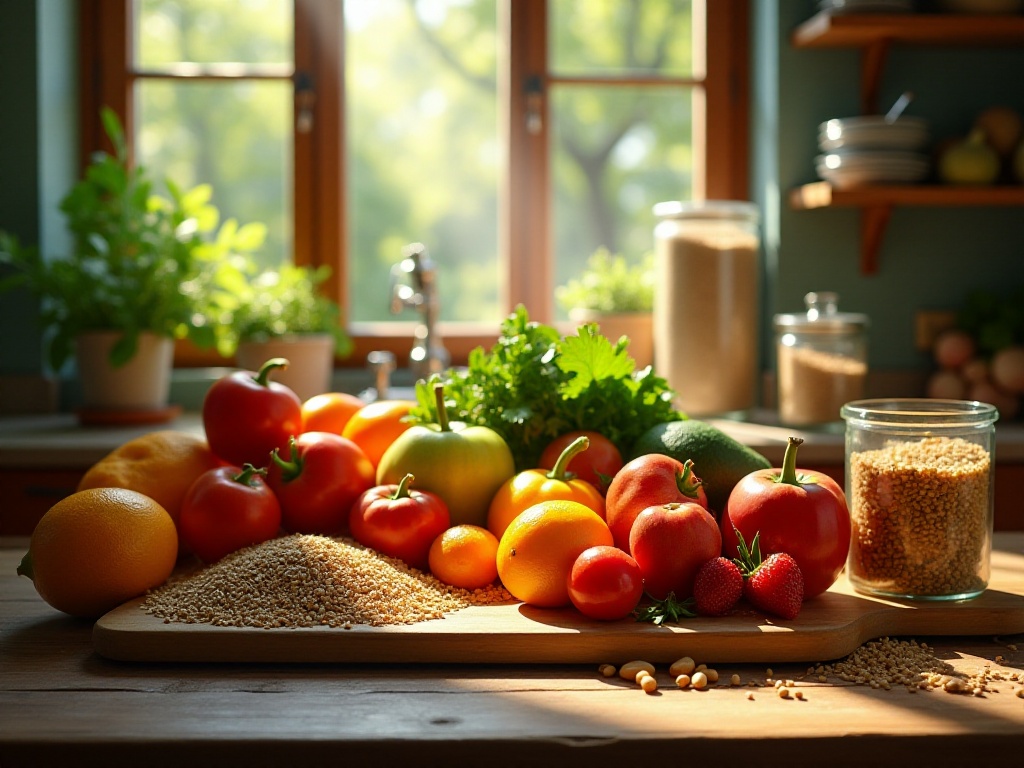
Opening Message
As a post-95s generation fitness enthusiast who frequents gyms and studies nutrition, I deeply understand that healthy eating isn't rocket science. I've seen too many friends crash diet for health and fitness, only to damage their bodies without achieving their goals. In reality, healthy eating is about using scientific methods to nourish your body while enjoying food.
Through years of practice and research, I've found that establishing the right mindset is crucial for healthy eating. Many people think healthy eating means "eating like a rabbit" - just boiled vegetables and chicken breast. This is completely wrong! Healthy eating can be delicious; the key is knowing how to combine and choose foods.
Carbohydrate Choices
Carbs are truly a love-hate relationship. When I first started working out, I was misled by "zero-carb" rhetoric online and spent a whole month severely restricting carbs. The result? Poor training results, increased irritability, and plummeting work efficiency. Later I realized that carbs aren't the enemy of healthy eating - choosing the right carbs is key.
Now, I choose whole wheat bread or oatmeal for breakfast. Not the fake "whole wheat" brown bread from supermarkets, but genuine whole wheat bread. It might taste rougher, but that's exactly what indicates it retains the wheat's nutritional essence. My favorite way is to lightly toast the whole wheat bread, spread a layer of peanut butter, and top it with banana slices. It's delicious and provides sustained energy.
For lunch and dinner starches, I choose brown rice, quinoa, or sweet potatoes. Though brown rice takes longer to cook than white rice, its fiber and vitamin content far exceeds white rice. If brown rice's texture feels too rough, try mixing white and brown rice in a 7:3 ratio, gradually increasing the brown rice proportion as you adjust.
Quinoa is another favorite of mine. It not only contains quality protein but is also rich in various vitamins and minerals. I love tri-color quinoa - the red, white, and black colors look beautiful together, and when cooked it has a nutty aroma. Paired with some pan-fried chicken breast and sautéed broccoli, it makes a perfect healthy meal.

Protein Combinations
Protein is absolutely crucial in healthy eating. I used to think protein supplementation meant endless chicken breast, but now I know there are so many rich sources of quality protein.
Let's start with animal protein. Besides the well-known chicken breast, lean beef is also an excellent choice. But note that grass-fed beef is preferable - though more expensive, its nutritional value is indeed higher. Seafood protein is also excellent, especially deep-sea fish like salmon and tuna. I particularly enjoy making tuna salad, combined with chickpeas, sweet corn, and broccoli, topped with a low-fat yogurt dressing - it's both delicious and healthy.
Plant protein is also an indispensable protein source. Soy products are a given - firm tofu, silken tofu, dried tofu, they're all delicious however you prepare them. I've recently become obsessed with making my own silken tofu - the texture is smooth, and the protein content is particularly high. Additionally, various beans like edamame, soybeans, and black beans are all great choices. I've also discovered a new favorite: mushrooms. Though their protein content isn't as high as meat, they have an excellent texture and are almost fat-free.

Nutritional Supplementation
Key Nutrients
Nutritional supplementation is an easily overlooked issue. Many people think young people only need regular meals, without specifically supplementing anything. However, the reality is that modern lifestyles make us prone to lacking certain key nutrients.
Vitamin D is a typical example. Many young people now follow an early-rise-late-return schedule, barely getting any sunlight. Combined with long hours in air-conditioned rooms, severe vitamin D deficiency has become common. I learned this the hard way - last year's physical examination showed severe vitamin D deficiency, leaving me not only lacking energy but also particularly susceptible to colds.
Later, I began consciously supplementing vitamin D, drinking vitamin D-fortified milk in the morning and trying to get some sun on weekends. Now I feel my overall energy level has improved significantly, and my immunity has also increased notably.
Calcium supplementation is also important. Don't think calcium supplementation is just for middle-aged and elderly people - young people also need adequate calcium to maintain bone health. I now drink a glass of milk every morning and eat dark green vegetables like Chinese cabbage and broccoli for lunch or dinner. If plain milk seems too boring, try making smoothies with milk, fruit, and oatmeal - both delicious and nutritious.

Good Fat Supplementation
When it comes to fat, many people immediately fear it. But actually, appropriate amounts of good fats not only won't make you gain weight but are particularly important for your body. Good fats help the body absorb fat-soluble vitamins and make skin more radiant.
I particularly recommend nuts. Eating a small handful of mixed nuts daily, like walnuts, almonds, and cashews, not only provides good fats but also protein and minerals. However, note that nuts are relatively high in calories, so control portions - one small handful per day is enough.
Omega-3 fatty acids from deep-sea fish are also an excellent fat source. I now eat salmon twice a week, sometimes pan-fried, sometimes as sashimi. If salmon seems too expensive, mackerel and sardines are also good choices.
Olive oil and avocados are also important sources of good fats. I now use extra virgin olive oil for salads - though more expensive, its monounsaturated fatty acids are particularly beneficial for cardiovascular health. I usually eat avocados either plain or make them into avocado spread for bread - particularly delicious.

Practical Strategies
Meal Prep Tips
Honestly, the hardest part of healthy eating isn't knowing what to eat, but how to maintain it in a busy life. I've made quite a few mistakes in this area, but now I've finally found some practical methods.
First is ingredient preparation. I now spend one to two hours every Sunday afternoon doing food prep. This mainly includes:
-
Washing and cutting vegetables: For vegetables that store well like carrots, broccoli, and celery, I wash and cut them in advance, storing them in containers. This way I can just take them out when cooking.
-
Marinating meat: I portion chicken breast and lean beef, marinate them with different seasonings, and store them in the refrigerator. This way I can eat different variations daily, avoiding monotony while maintaining balanced nutrition.
-
Preparing staples: I pre-cook some brown rice and quinoa, portion them, and store them in the refrigerator. Just heat them up when needed - very convenient.
-
Preparing sauces: I prepare salad dressings and cold dish seasonings in advance. This not only saves time but ensures consistent seasoning.
Second is the choice of containers. I now use compartmented lunch boxes, which help control portions of each food. Different foods don't mix together, and it looks elegant even when taken to the office.

Eating Habits
Developing healthy eating habits is truly a process that requires time and patience. It took me about half a year to really establish healthy eating habits.
First is changing the perception of food. I used to think healthy food meant tasteless food, but now I've discovered that healthy food can be delicious with proper combinations. For example, I now love using spices to enhance food flavors. Spices like curry powder, rosemary, and thyme not only make food more delicious, many also have antioxidant properties.
Second is establishing regular meal times. I now maintain a schedule of breakfast at 7:30 AM, lunch at 12 PM, and dinner at 6:30 PM. This not only helps the body better digest and absorb nutrients but also avoids overeating due to hunger.
Recording food intake is also a good habit. I now use a phone app to record what I eat daily, which not only helps me clearly understand my nutritional intake but also helps identify and adjust unreasonable aspects. For example, through recording, I discovered my protein intake was severely insufficient, which led me to consciously increase protein intake.
Food Shopping

Smart Shopping
Honestly, the cost of healthy eating is indeed higher than regular eating. But if you master the right shopping methods, it won't be much more expensive. I now spend some time each week studying supermarket promotions and then make shopping lists.
My shopping principles are:
First, look for seasonal ingredients. Seasonal fruits and vegetables are not only fresher but also more affordable. For example, buy more tomatoes and cucumbers in summer, more cabbage and radishes in winter.
Second, buy more storable ingredients. Items like nuts, quinoa, and brown rice can be bought in larger quantities when on sale. But pay attention to storage methods - I usually keep these ingredients in sealed containers to avoid moisture.
Third, balance combinations. I now ensure color balance when buying vegetables - not only does it look beautiful, but it also provides more comprehensive nutrition. Red tomatoes, orange carrots, green broccoli, purple eggplants - each color represents different nutrients.
Beverage Pairings
When it comes to healthy eating, beverage choice is also particularly important. I've basically given up sugary drinks now, just drinking water, tea, and coffee.
For water, I keep a large water bottle at my computer with time markers, reminding me how much to drink each hour. To make drinking water more interesting, I add some natural flavorings. Things like lemon slices, mint leaves, lime slices, etc., make it both attractive and flavorful.
Tea selection is also important. I now particularly enjoy green tea and oolong tea, which not only help stay alert but also contain many antioxidants. But note that it's best to drink tea half an hour to an hour after meals to avoid affecting nutrient absorption.
For coffee, I usually choose black coffee, without sugar or milk. Though it might taste bitter at first, you gradually taste the coffee's natural flavor. Plus, black coffee contains almost no calories and provides antioxidants.

Final Thoughts
Through these years of practice, I increasingly feel that healthy eating is actually a lifestyle. It's not a short-term diet plan or painful self-torture, but finding an eating style that's both healthy and suitable for yourself.
Most important is establishing correct eating concepts. Healthy eating doesn't mean completely giving up foods you like, but learning reasonable combinations and portion control. For example, if you eat something greasy for lunch, choose lighter foods for dinner. If you eat more at weekend gatherings, eat more vegetables and fruits the next day.
Actually, the ultimate purpose of healthy eating is to live better. When you truly develop healthy eating habits, you'll find not only does your body become healthier, but your mood also improves. Because you know you're taking responsibility for your health.
These are some of my insights about healthy eating. There are actually many more details to share, like how to make healthy choices when dining out, how to maintain healthy eating during holidays, etc. If you're interested, we can continue discussing. After all, the topic of healthy eating is endless.
Next
Smart People's Nutrition Management Tips for Effortless Health and Fitness
A comprehensive guide to healthy eating and nutrition, covering balanced diet composition, healthy eating habits, and practical tips. Detailed information on choosing carbohydrates, proteins, healthy fats, and strategies for diverse fruit and vegetable intake
Done Being a Nutrition Novice? This Comprehensive Nutrition Guide Will Help You Eat Scientifically Starting Today
A comprehensive guide exploring core principles of balanced nutrition and healthy eating, including nutritional optimization advice, scientific dietary methods, and practical meal management tips to help readers establish healthy eating habits
A Nutritionist Tells You: This is How to Eat Healthy Without Too Much Hassle - I've Been Practicing for 3 Years
A comprehensive guide to healthy eating and nutrition improvement, covering dietary principles, habit formation, and practical tips on whole grain selection, fruit and vegetable combinations, and protein intake for a balanced diet
Next

Smart People's Nutrition Management Tips for Effortless Health and Fitness
A comprehensive guide to healthy eating and nutrition, covering balanced diet composition, healthy eating habits, and practical tips. Detailed information on choosing carbohydrates, proteins, healthy fats, and strategies for diverse fruit and vegetable intake

Done Being a Nutrition Novice? This Comprehensive Nutrition Guide Will Help You Eat Scientifically Starting Today
A comprehensive guide exploring core principles of balanced nutrition and healthy eating, including nutritional optimization advice, scientific dietary methods, and practical meal management tips to help readers establish healthy eating habits

A Nutritionist Tells You: This is How to Eat Healthy Without Too Much Hassle - I've Been Practicing for 3 Years
A comprehensive guide to healthy eating and nutrition improvement, covering dietary principles, habit formation, and practical tips on whole grain selection, fruit and vegetable combinations, and protein intake for a balanced diet
